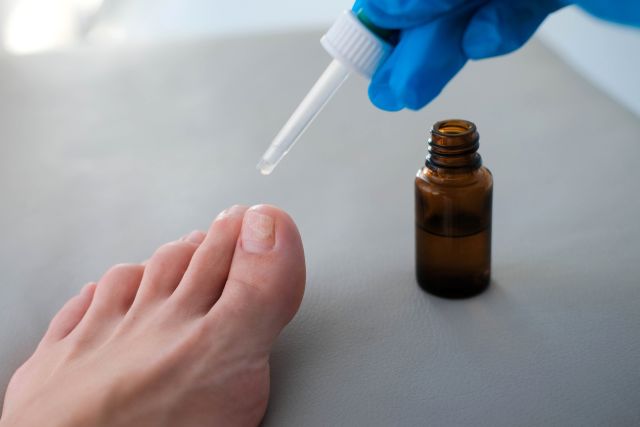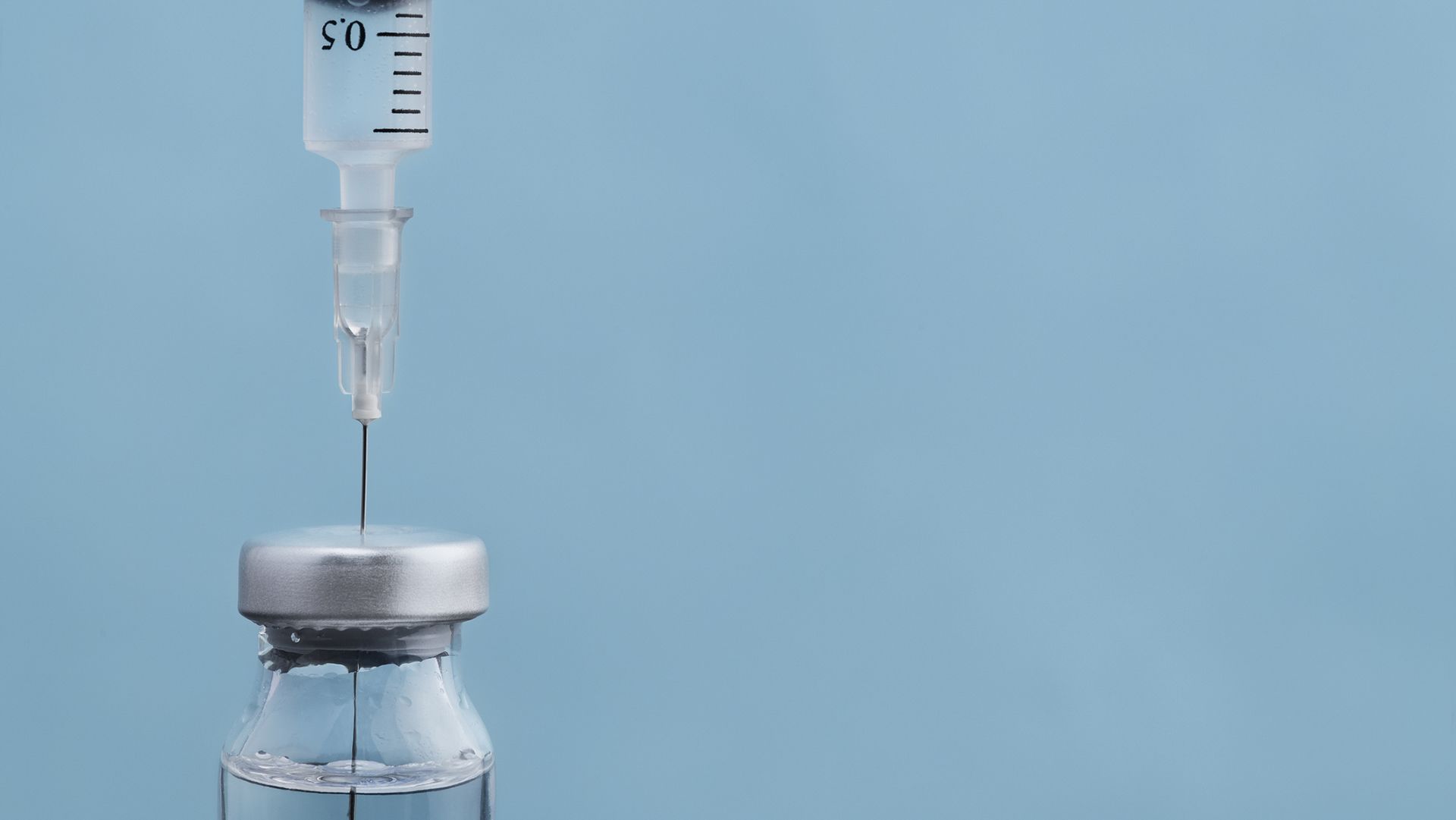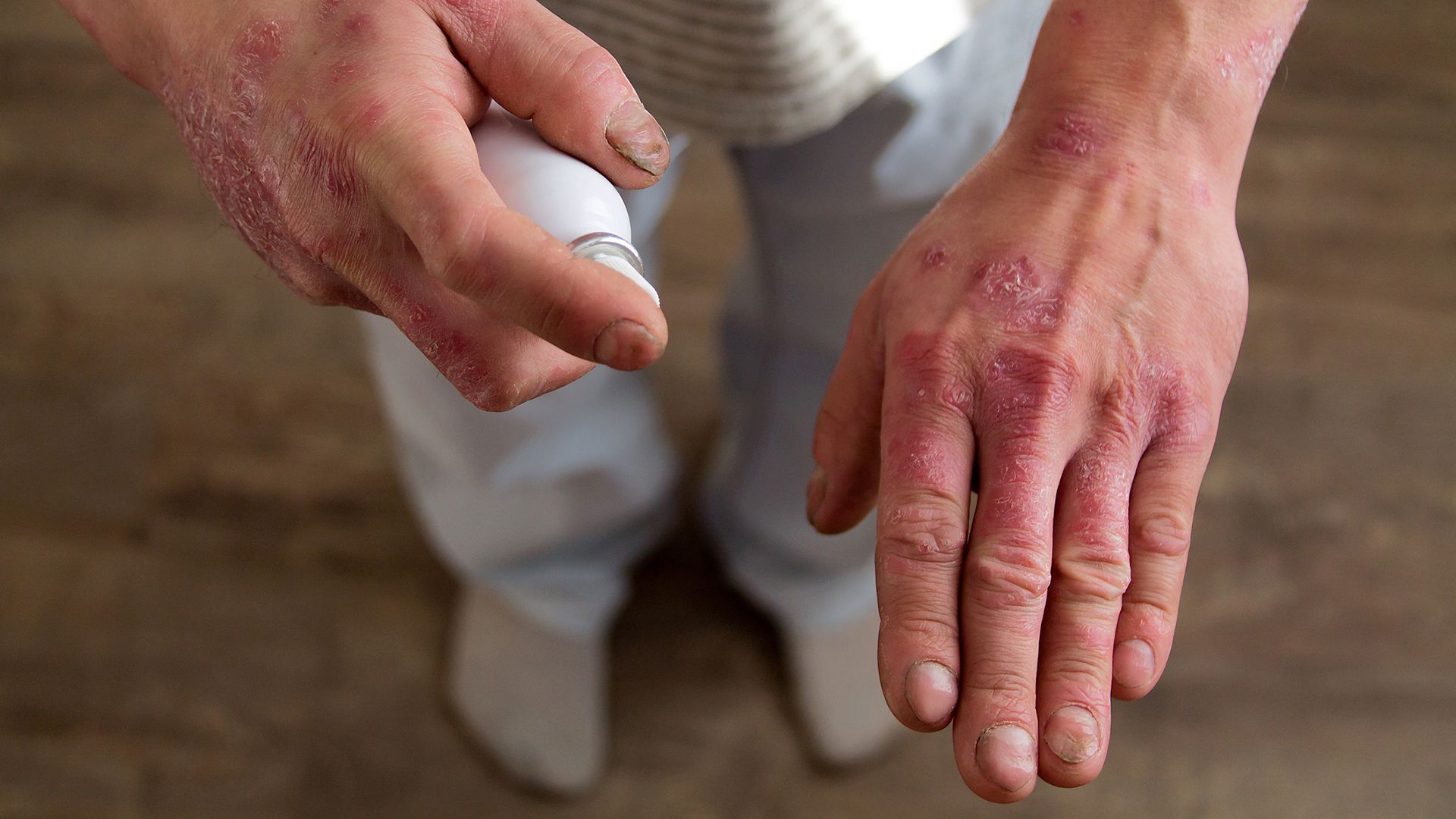Up to 78% of people with psoriasis have psoriatic nail disease (PND). There’s an even bigger chance if you have psoriatic arthritis; four out of five people with PsA have psoriatic nail disease.
PND can turn your nails yellow and fragile, and make everyday work with your hands painful. Some of the specific symptoms include:
- Holes in the nail (pitting)
- Deformation or warping
- Thickening and crumbling
- Onycholysis—separation of the nail from the nail bed
- Discoloration
The problem
PND, like other nail conditions such as onychomycosis (nail fungus), is difficult to eliminate. That’s because the nail itself is a tough spot to treat. The nail plate—what you think of as your finger- or toenail—acts as a suit of armor, and it’s tough for topical drugs to penetrate it. Also, because nails grow slowly, treatment usually takes a long time, and some people are unwilling to take their medication for so long.
Medical treatments
Having PND doesn’t mean throwing out your flip-flops or wearing mittens all summer, though. A number of treatments can help. If the nail changes are mild and affect only a few nails, topical medications (gels, liquids, ointments or lacquers applied to the nail and sometimes the surrounding skin) are usually the first choice. High-strength corticosteroids are often used with a cellophane wrap at bedtime. Several other medications, including drugs related to vitamins A and D, may also be tried. All can improve PND, but they rarely clear it up completely, and the treatments may last up to six to nine months.
Medicine injections around the nails are also helpful, but they can be painful. Some doctors also recommend light or laser therapy.
When people have PND in most of their nails along with other bothersome psoriasis symptoms, doctors may prescribe heavy-duty “systemic” medications. Methotrexate and cyclosporine are two of the best-studied treatments, but both carry the risk of extreme side effects, such as damage to the liver and kidneys. Biologic drugs are a newer choice and appear to be very effective, but they have risks, as well.
Prevention
Taking your medication isn’t the only thing you can do to control your PND. You also need to take care of your nails in order to keep them shiny and healthy.
- Keep nails short and protected. Chipping or breaking your nails can bring on or worsen PND. Wear gloves during activities that might damage them, like gardening or manual labor.
- Keep nails natural. Avoid synthetic nails, and if you have a flare-up, you may even need to stay away from polish.
- Keep nails dry. Soaking too long can actually leach moisture from your hands and feet, causing flare-ups. Limit baths and soaking during manicures and pedicures.





